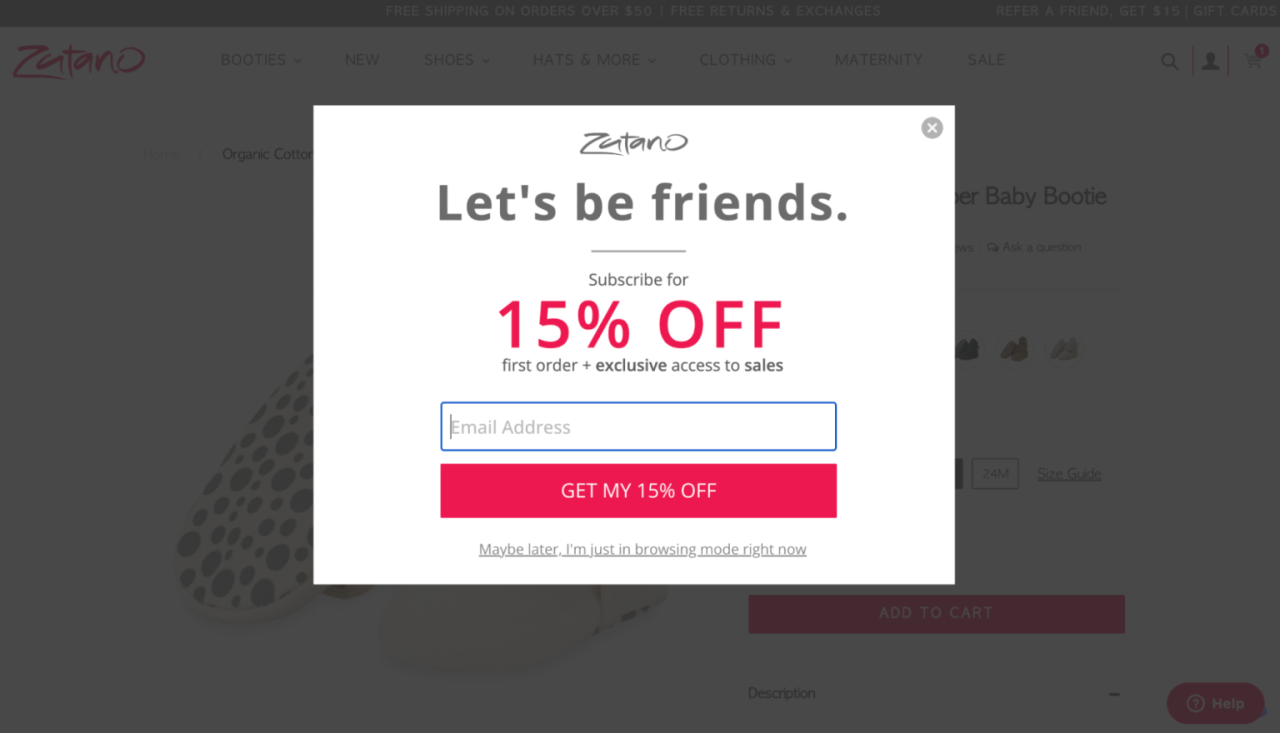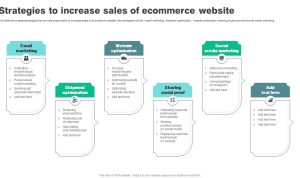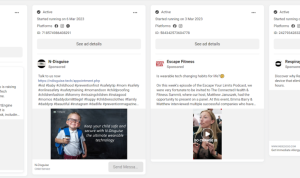How to Reduce Cart Abandonment in Your Online Store is a crucial topic for any e-commerce business aiming to maximize sales and enhance customer satisfaction. Cart abandonment remains one of the biggest challenges faced by online retailers, with statistics showing that a significant percentage of shoppers leave their carts without completing purchases. Understanding the reasons behind this behavior and implementing effective strategies can transform potential losses into completed sales, providing a smoother shopping experience for customers.
From optimizing user experience to employing effective communication strategies, addressing cart abandonment requires a multi-faceted approach. By leveraging incentives, ensuring trust and security, and analyzing customer behavior, online stores can create an environment where customers feel encouraged to finalize their purchases. This guide will walk you through actionable steps to reduce cart abandonment and improve your overall sales performance.
Understanding Cart Abandonment
Cart abandonment is a significant challenge faced by online retailers, impacting revenue and customer experience. It refers to the situation where a potential buyer adds items to their shopping cart but leaves the site without completing the purchase. This phenomenon is crucial for e-commerce businesses to understand, as it reveals potential barriers in the buying process and highlights opportunities for improvement.Recent statistics reveal that cart abandonment rates hover around 69.8% on average across various industries.
This figure indicates that nearly 7 out of 10 customers leave items in their carts without finalizing transactions. Factors contributing to these rates vary by demographic and market segment, emphasizing the need for tailored solutions to address this widespread issue.
Common Reasons for Cart Abandonment
Understanding the reasons behind cart abandonment is essential for e-commerce businesses aiming to reduce these occurrences. Several factors contribute to a customer’s decision to leave a shopping cart, and recognizing them can help retailers design strategies to mitigate abandonment.Key reasons for cart abandonment include:
- High shipping costs: Unexpected or excessive shipping fees can deter customers from proceeding to checkout.
- Complicated checkout process: A long or confusing checkout process can frustrate customers, leading them to abandon their carts.
- Mandatory account creation: Requiring customers to create an account before checkout can lead to drop-offs, as many prefer the option to check out as guests.
- Lack of payment options: Limited payment methods may not suit all customers, causing them to abandon their carts in search of more flexible options.
- Concerns about security: Customers may hesitate to provide personal or financial information if they feel the site is not secure.
Addressing these concerns can significantly enhance the customer experience, fostering higher conversion rates and reducing cart abandonment. Implementing strategies tailored to these issues will not only improve sales but also build trust and loyalty among customers.
“Reducing cart abandonment requires a comprehensive understanding of customer behavior and a commitment to improving the online shopping experience.”
User Experience Optimization
Creating a seamless user experience is critical in reducing cart abandonment rates in online stores. Customers are more likely to complete their purchases when they find the shopping process intuitive and enjoyable. In this section, we’ll explore the key elements of user experience that impact cart abandonment, methods to improve website navigation, and strategies for refining the checkout process to enhance customer satisfaction.
Key Elements Influencing Cart Abandonment
Several aspects of user experience can significantly affect whether a shopper completes their purchase or abandons their cart. These elements include website speed, mobile optimization, and the overall design and layout of the site.
Website Speed
A slow-loading website can frustrate users, leading them to abandon their carts. It’s essential to optimize images and scripts to ensure fast page loads.
Mobile Optimization
With increasing mobile traffic, a mobile-friendly design is crucial. If users struggle to navigate your site on their mobile devices, they’re likely to leave without completing a purchase.
Clear Call-to-Action (CTA)
Prominent and well-placed CTAs encourage users to proceed with their shopping journey. A CTA button that stands out can significantly increase conversion rates.
Enhancing Website Navigation and Product Visibility
Improving navigation and product visibility helps shoppers find what they need quickly, thus minimizing the chances of cart abandonment. Consider the following methods:
Simplified Menu Structure
A well-organized menu ensures users can easily find categories and products. Use clear labels and avoid overcomplicating the navigation with too many options.
Search Functionality
Implement a robust search feature that auto-suggests products as users type. This reduces the time spent searching and directs them to relevant items.
Product Filters
Allow users to filter products by categories such as size, color, price, and popularity. This tailored experience enhances product visibility and makes it easier for customers to locate desired items.
Checkout Process Optimization Checklist
A streamlined checkout process is vital for minimizing friction and reducing cart abandonment. Here’s a checklist to optimize your checkout experience:
Guest Checkout Option
Allow customers to check out without creating an account. This reduces the steps involved and speeds up the process.
Progress Indicators
Use progress bars to show users where they are in the checkout process. This transparency can reduce anxiety and encourage completion.
Multiple Payment Options
Provide various payment methods, including credit cards, PayPal, and other digital wallets. Catering to customer preferences can enhance convenience.
Auto-fill Features
Implement auto-fill options for returning customers to speed up form filling. This enhances usability and encourages purchases.
Clear Return Policy
Clearly display your return policy during checkout to alleviate customer concerns about making a purchase.
“An optimized user experience not only enhances customer satisfaction but also significantly boosts conversion rates.”
Effective Communication Strategies
In the fast-paced world of online shopping, effective communication can significantly impact your ability to recover abandoned carts. By reaching out to customers who have left items behind in their shopping carts, you can gently remind them of their almost-purchases and encourage them to complete their transactions. Strategic communication not only enhances customer experience but also increases sales, making it a vital part of your e-commerce strategy.One of the most effective ways to engage with customers post-abandonment is through email reminders.
These reminders can be tailored to resonate with individual shoppers, creating a personalized approach that enhances connection and encourages action. The key is to craft messages that not only remind customers of their abandoned carts but also entice them to return with compelling content.
Email Reminders for Cart Recovery
Email reminders serve as a direct line of communication to re-engage customers who have left items in their carts. Crafting effective recovery emails involves timing, content, and personalization. Here are some detailed strategies for optimizing your email recovery efforts:
1. Timing of Emails
The timing of your reminders plays a crucial role in their effectiveness. Sending the first reminder within an hour of cart abandonment ensures that the customer’s interest is still fresh. Follow-up reminders can be sent 24 hours and then 72 hours after the initial abandonment, each time with a different message to maintain engagement.
2. Personalized Messaging
Personalized emails are more likely to capture attention. Include the customer’s name and the specific items they left behind. Creating a sense of urgency can also motivate customers to complete their purchase. Phrases like “Only a few left in stock!” or “Don’t miss out on this deal!” can be effective.
3. Compelling Subject Lines
The subject line of your cart recovery email is the first thing customers see, making it essential for grabbing their attention. A well-crafted subject line can significantly increase open rates. Here’s a list of effective subject lines to consider: “Oops! You left something behind…”
“Your cart is waiting for you!”
“Still thinking it over? Your items are just a click away!” “Don’t miss out! Complete your purchase today.”
“Your cart is expiring soon—act now!”
“Just for you
A special offer on your cart items!”
“We saved your cart for you—take another look!”
“Want to complete your order? Here’s a reminder!”The ultimate goal of these strategies is to create engaging, relevant, and personalized communication that compels customers to return and complete their purchases. By delivering timely and tailored messages, businesses can significantly reduce cart abandonment rates and enhance overall sales performance.
Incentives and Discounts

In today’s competitive e-commerce landscape, offering incentives and discounts can be a game-changer in reducing cart abandonment rates. Shoppers often leave their carts due to unexpected costs or a lack of motivation to complete their purchase. Implementing effective incentive strategies can encourage customers to finalize their transactions, ultimately boosting sales and improving customer loyalty.There are several types of incentives that online stores can leverage to encourage cart completion.
These can include monetary discounts, free shipping, loyalty points, and exclusive offers. By understanding the preferences of your target audience, you can tailor these incentives to maximize their effectiveness in driving conversions.
Types of Incentives
To highlight the various types of incentives available, here are some common strategies that can effectively motivate customers:
- Percentage Off Discounts: Offering a percentage off the total purchase price can be appealing, especially for larger transactions. For example, a 20% discount on a $100 purchase saves the customer $20, creating a sense of value.
- Fixed Amount Discounts: A fixed dollar amount off can also be enticing. For instance, a $10 discount on a $50 purchase encourages customers to spend more to receive the discount.
- Free Shipping: Perhaps one of the most effective incentives is free shipping. Many customers abandon their carts when they see high shipping fees. Offering free shipping can eliminate this barrier and significantly increase conversion rates.
- Loyalty Rewards: Implementing a loyalty program where customers earn points for their purchases can incentivize repeat business. This not only promotes cart completion but also fosters long-term customer relationships.
- Exclusive Offers: Creating time-sensitive exclusive deals can create urgency. For instance, offering an extra discount for first-time buyers or special promotions for returning customers can encourage immediate action.
Comparison of Effective Discount Strategies
When considering the most effective discount strategies, it’s essential to compare their impact on customer behavior and sales performance. Below is a brief evaluation of two common approaches: percentage off versus free shipping.
| Strategy | Pros | Cons |
|---|---|---|
| Percentage Off | Attractive for larger purchases, visible savings can increase perceived value. | May not be effective for smaller transactions; can reduce profit margins. |
| Free Shipping | Addresses a common reason for cart abandonment, highly valued by customers. | Can eat into profits if not managed properly, may require minimum purchase thresholds. |
Impact of Limited-Time Offers
Limited-time offers create a sense of urgency that can significantly improve cart recovery rates. By implementing countdown timers or highlighting expiring deals, you encourage customers to act swiftly to avoid missing out. Research indicates that urgency can lead to a higher conversion rate, as customers feel compelled to finalize their purchase before the offer expires.
“Limited-time offers can increase sales by creating a fear of missing out (FOMO), which often drives customers to complete their purchases quickly.”
Implementing such strategies can turn hesitant shoppers into satisfied customers, enhancing their overall shopping experience while boosting your store’s revenue.
Trust and Security Considerations: How To Reduce Cart Abandonment In Your Online Store
In the world of online shopping, trust and security play vital roles in reducing cart abandonment. Customers need to feel secure when providing their personal and payment information, and establishing trust can significantly enhance their shopping experience. By incorporating specific trust signals and ensuring secure payment options, online retailers can encourage customers to complete their purchases confidently.
Key Trust Signals on Checkout Pages
To instill confidence in customers during the checkout process, implementing visible trust signals is essential. These indicators reassure shoppers that their information is protected and that they are engaging with a reputable business. Here are several crucial trust signals that can be included on checkout pages:
- SSL Certificates: Displaying a Secure Socket Layer (SSL) certificate symbol indicates that the website encrypts customer data, making it secure for transactions.
- Brand Logos: Including logos of trusted payment providers (like PayPal, Visa, or Mastercard) can enhance credibility and facilitate customer trust.
- Privacy Policy: Providing a link to a clear and transparent privacy policy reassures customers that their data will be handled responsibly.
- Contact Information: Displaying a physical address and contact number signals transparency and accountability, making customers feel safer when completing their purchase.
- Return Policy: Highlighting a customer-friendly return policy can reduce the perceived risk of making a purchase.
Importance of Secure Payment Options
Offering secure payment options is crucial for reducing cart abandonment rates. Customers are more likely to complete a purchase when they have access to well-known and trusted payment gateways. The security of these payment methods can greatly impact customer decisions. It is essential to support various payment options such as credit/debit cards, PayPal, and digital wallets, which cater to different customer preferences.
According to studies, approximately 18% of customers abandon their carts due to concerns over payment security. This figure highlights the importance of ensuring that payment processes are secure and customer-friendly.
“Offering multiple secure payment options can significantly mitigate the risk of cart abandonment.”
Effective Display of Customer Reviews and Testimonials
Customer reviews and testimonials can serve as powerful trust signals on your website. They provide social proof that your products or services are reliable and valued by others. Here’s how to display them effectively to enhance trust and minimize cart abandonment:
Prominent Placement
Display reviews near the product or during the checkout process to catch the attention of potential buyers as they make their decisions.
Star Ratings
Use star ratings to give customers a quick visual overview of product satisfaction. This can help in making quick decisions.
Verified Purchaser Tags
Highlight reviews from verified purchasers to add authenticity and credibility to the testimonials.
Diverse Feedback
Show a mix of positive and constructive reviews to present a balanced view, allowing potential customers to see varied experiences.
Video Testimonials
Incorporating video testimonials can significantly engage users, making the feedback more relatable and trustworthy.By implementing these strategies, online retailers can effectively build trust and security around their checkout processes, ultimately reducing the likelihood of cart abandonment.
Mobile Optimization Techniques
The prevalence of mobile shopping has surged, making it crucial for online stores to provide a seamless mobile experience. As more consumers turn to their smartphones for shopping, a mobile-friendly design becomes a vital element in reducing cart abandonment rates. By ensuring that your online store is optimized for mobile devices, you can enhance user experience and drive conversions.Mobile-friendly designs are essential in accommodating the unique behaviors and preferences of mobile users.
A well-optimized mobile site can significantly affect how customers interact with your brand and, subsequently, their likelihood of completing a purchase. Here are specific design elements that can enhance the mobile shopping experience:
Design Elements for Mobile Shopping Experience
To create an effective mobile shopping environment, consider incorporating the following design elements that cater to mobile users:
- Responsive Layout: Ensure that your website automatically adjusts to different screen sizes, enabling a consistent look and feel across devices.
- Large Touch Targets: Utilize buttons and links that are easy to tap, even for users with larger fingers. This reduces frustration and improves navigation.
- Minimalist Design: Keep the interface clutter-free. A simple design leads to faster load times and a more enjoyable user experience.
- Fast Loading Times: Optimize images and minimize scripts to enhance loading speed. A delay of even a few seconds can lead to higher abandonment rates.
- Clear Product Descriptions: Use concise and informative descriptions that are easy to read on small screens, helping customers make informed decisions quickly.
To further simplify the mobile checkout process, implement the following strategies that focus on user convenience and efficiency:
Tips for Simplifying Mobile Checkout Processes
Streamlining the mobile checkout experience can significantly reduce cart abandonment. Consider these tips for an efficient checkout process:
- Guest Checkout Option: Allow users to complete their purchases without forcing them to create an account, which can often deter them from finalizing their order.
- Auto-fill Features: Integrate auto-fill capabilities for address and payment information to expedite the checkout process.
- Progress Indicators: Use visual cues to show customers where they are in the checkout process, helping to manage their expectations and enhance user experience.
- Multiple Payment Options: Offer various payment methods, including digital wallets and credit cards, catering to customer preferences.
- Mobile-Optimized Forms: Design forms that are easy to complete on mobile devices, utilizing dropdowns and checkboxes to minimize typing.
“A seamless mobile experience can increase conversion rates by up to 50%, making it essential for online retailers.”
Analyzing Customer Behavior
Understanding customer behavior is crucial for addressing cart abandonment effectively. By analyzing how customers interact with your online store, you can uncover patterns that lead to abandonment and develop strategies to mitigate these issues. Tracking customer behavior not only provides insights into individual preferences but also allows you to identify common obstacles that deter potential buyers from completing their purchases.To effectively track and analyze customer behavior, it is important to utilize various tools and metrics that facilitate the gathering of valuable insights on shopping cart usage.
Implementing analytics software can illuminate interaction points, drop-off rates, and the overall shopping experience for your users.
Methods for Tracking Customer Behavior
Employing specific methods to track customer behavior can shed light on why abandonment occurs. Here are several techniques to consider:
- Web Analytics Tools: Utilize platforms like Google Analytics or Adobe Analytics to monitor user behavior. These tools allow you to track page views, time spent on pages, and interactions with your shopping cart.
- Heatmaps: Tools such as Hotjar or Crazy Egg provide heatmaps that visually represent where users click, scroll, and how they navigate through your site. This information can highlight which areas of your site may be causing confusion or frustration.
- Session Recordings: Observing actual user sessions through tools like FullStory can reveal the paths customers take before abandoning their carts. This can help identify usability issues.
- A/B Testing: Implement A/B tests to evaluate different site layouts, checkout processes, or calls-to-action. This can help determine what resonates best with your audience and minimize abandonment rates.
Analyzing these behaviors offers a clearer picture of customer preferences and pain points, enabling you to refine the shopping experience effectively.
Tools and Metrics for Insight Gathering, How to Reduce Cart Abandonment in Your Online Store
To gather insights into shopping cart usage, several tools and metrics can be implemented. The right combination of analytics tools and key performance indicators (KPIs) can provide comprehensive insights into customer behavior.
- Conversion Rate: Measure the percentage of visitors who complete a purchase versus those who add items to their cart. A low conversion rate may indicate areas needing improvement.
- Abandonment Rate: Calculate the percentage of shopping carts that are abandoned compared to the total number of initiated checkouts. High rates can signal issues in the checkout process.
- Customer Segmentation Tools: Platforms like Klaviyo or Segment allow you to group customers based on their shopping behaviors, enabling targeted marketing strategies aimed at those who frequently abandon carts.
- Feedback Surveys: Implementing exit-intent popups or follow-up emails can help gather direct feedback from customers who abandon their carts, offering insights into their decisions.
Utilizing these tools and metrics will provide a detailed understanding of customer behavior, allowing for data-driven improvements to the user experience.
Strategies for Segmenting Customers
Segmenting customers based on cart abandonment patterns can lead to more effective marketing strategies and personalized experiences. Different behaviors indicate various motivations and barriers to completing a purchase.
- Frequency of Abandonment: Identify customers who frequently abandon their carts versus one-time abandoners. Tailoring follow-up emails or targeted offers can help convert habitual abandoners.
- Abandoned Cart Value: Segment customers based on the total value of their abandoned carts. High-value abandoners may require more enticing incentives to complete their purchase.
- Time to Abandonment: Analyze the time it takes for customers to abandon their carts after adding items. Those who abandon shortly after may require different strategies compared to those who linger.
- Behavioral Triggers: Monitor specific actions that precede abandonment, such as viewing shipping costs or returning to the homepage. This can highlight specific areas where communication or incentives may be beneficial.
Employing such segmentation strategies will help create targeted approaches that address the unique needs of different customer groups, ultimately reducing cart abandonment rates.
Continuous Improvement Processes
In the fast-paced world of e-commerce, it’s crucial to remember that the customer journey doesn’t end once a sale is made. To effectively reduce cart abandonment, establishing a system of continuous improvement for your checkout process based on customer feedback is key. This proactive approach allows businesses to adapt to changing consumer behaviors and preferences, ultimately leading to a smoother shopping experience.Regularly testing and refining checkout processes based on customer feedback not only enhances user experience but also builds customer loyalty.
A/B testing is a powerful tool in this context, allowing you to compare different versions of checkout elements to ascertain which variations yield better results. Implementing a structured approach to changes and carefully measuring their impacts can significantly reduce cart abandonment rates.
Testing and Improving Checkout Processes
To ensure that your checkout process continually meets customer expectations, it’s important to implement a structured testing and improvement strategy. Here are the steps to follow:
1. Collect Customer Feedback
Utilize surveys, feedback forms, and usability testing to gather insights directly from customers about their checkout experiences.
2. Set Benchmarks
Before making any changes, establish baseline metrics for current cart abandonment rates and other relevant performance indicators.
3. Conduct A/B Testing
Experiment with changes in your checkout process, such as button colors, layout adjustments, or input field placements. This helps identify which elements lead to higher conversion rates. For example, changing the color of a ‘Checkout’ button from blue to green may seem minor, but testing can reveal significant differences in click-through rates.
4. Implement Changes
Once testing is complete and you have data supporting one variation over another, roll out the winning changes across your site.
5. Measure Impact
After implementing changes, continuously monitor the cart abandonment rates and other key performance indicators to assess the effectiveness of the modifications.
6. Iterate and Repeat
Use the insights gained from the latest round of testing to inform the next cycle of changes. This creates a feedback loop that fosters continuous improvement.
“Continuous improvement in your checkout process not only reduces cart abandonment rates but also enhances customer satisfaction and loyalty.”
This structured approach not only allows for measurable improvements but also keeps the checkout process aligned with evolving customer expectations. By making testing and improvement a regular part of your operations, you can create a more engaging and effective shopping experience for your customers.





